In Chapter 1 of Haworthia Update Vol. 2, I discussed H. chloracantha and H. parksiana in the context of H. floribunda. Fig. 8 in that publication is labelled “North of Herbertsdale” when in fact it is MBB7425 from the Wolwedans Dam north of Great Brak (see fig.1). This was deliberate and not seriously misleading as the plants from the two respective populations are virtually identical. The correct images for that “north of Herbertsdale” are in Haworthia Revisited and labelled JDV87/80 and 97/138.
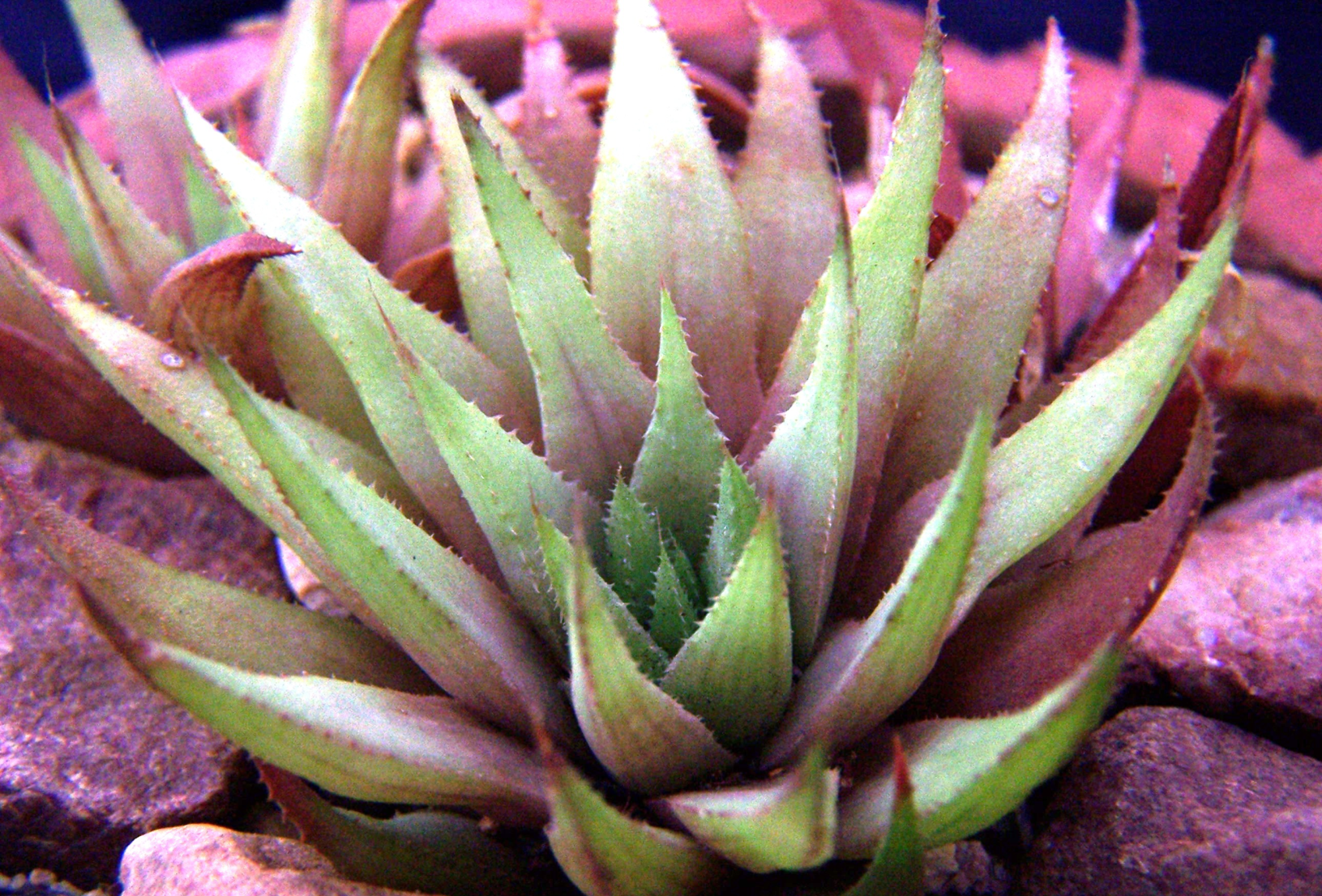
Recently I had an opportunity to visit Herbertsdale in connection with chameleons and took the opportunity to visit a locality also north of Herbertsdale, but a lot closer (see Figs 2.1-2.11. MBB 7825) reported to me by Mr. Jaap Viljoen of Swellendam.

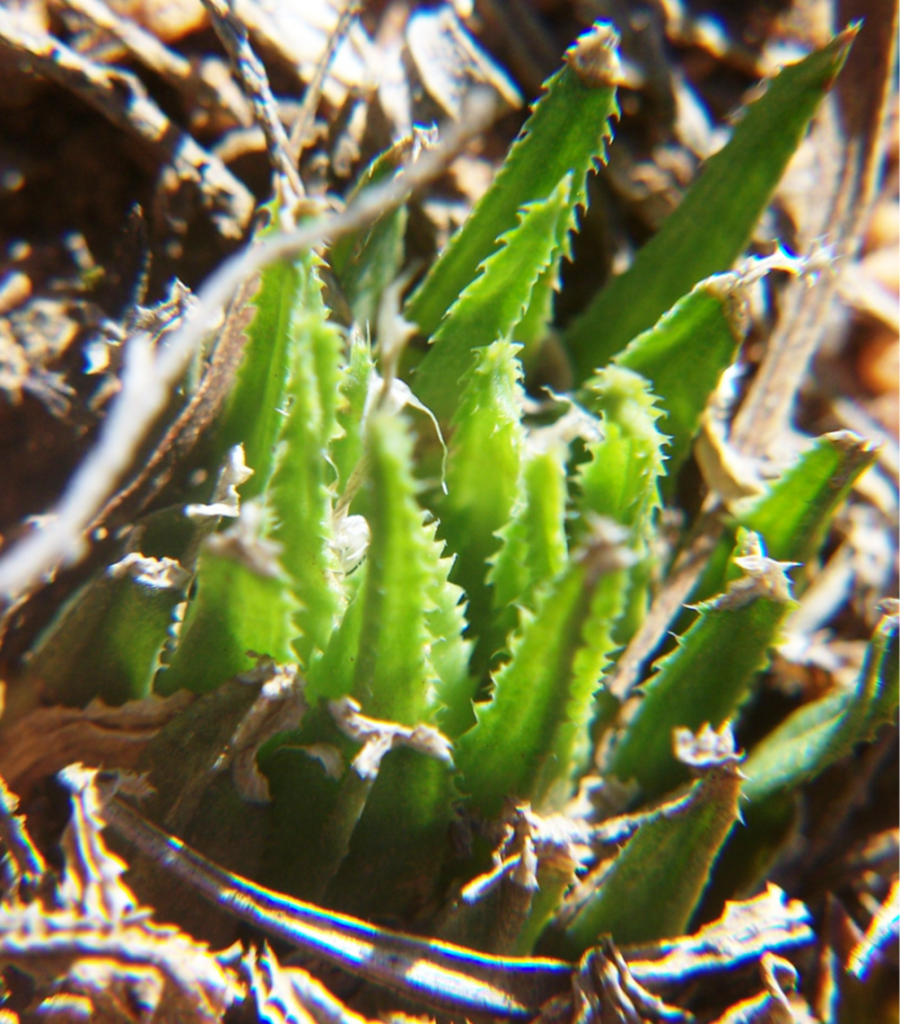


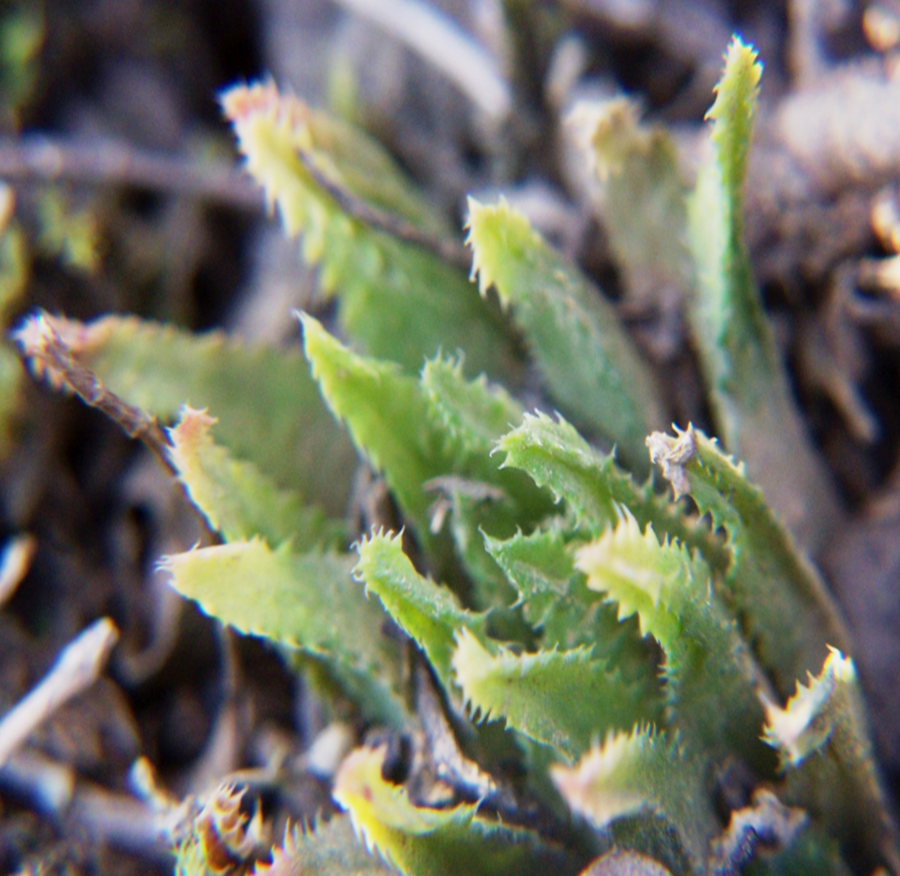
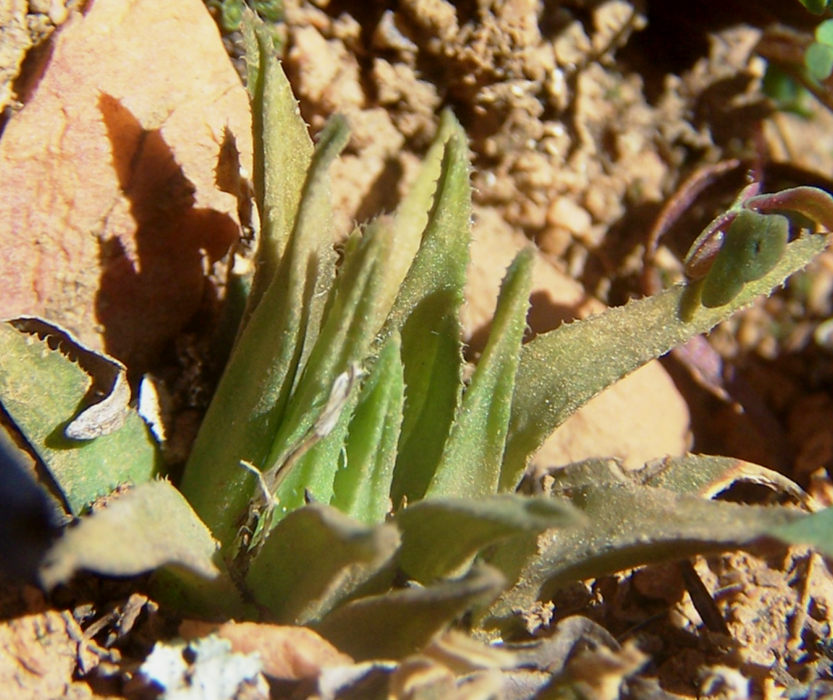
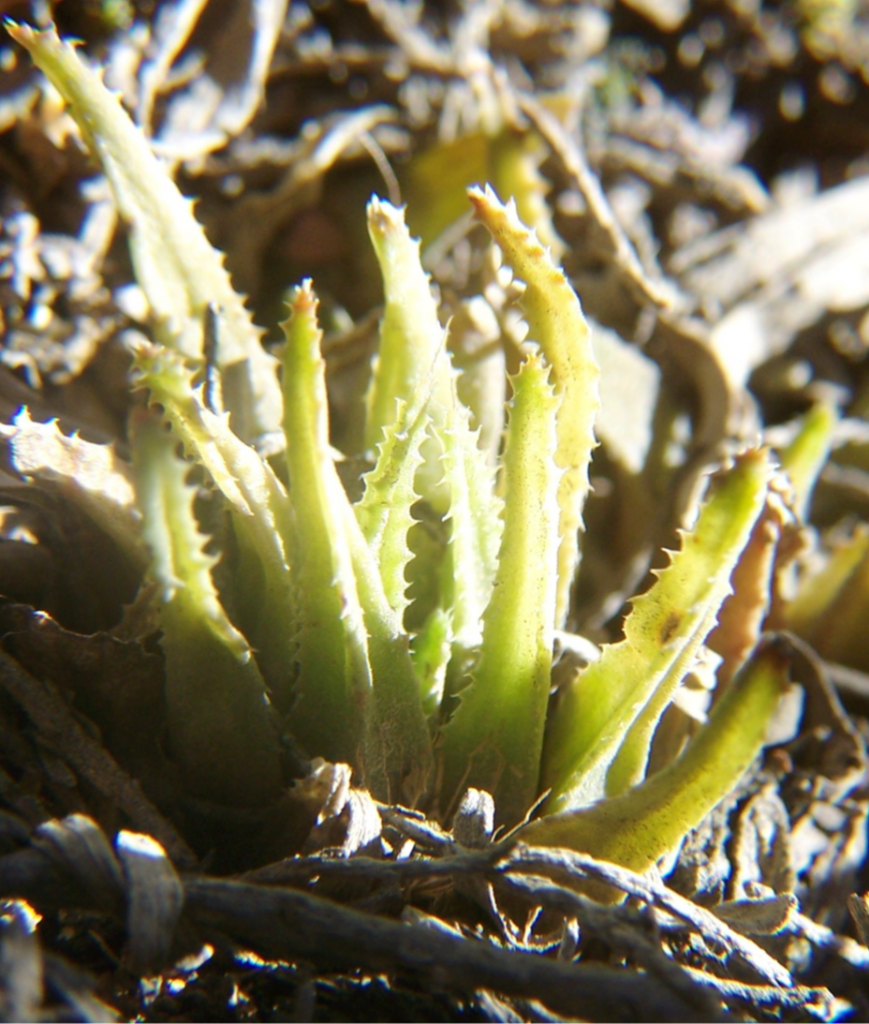
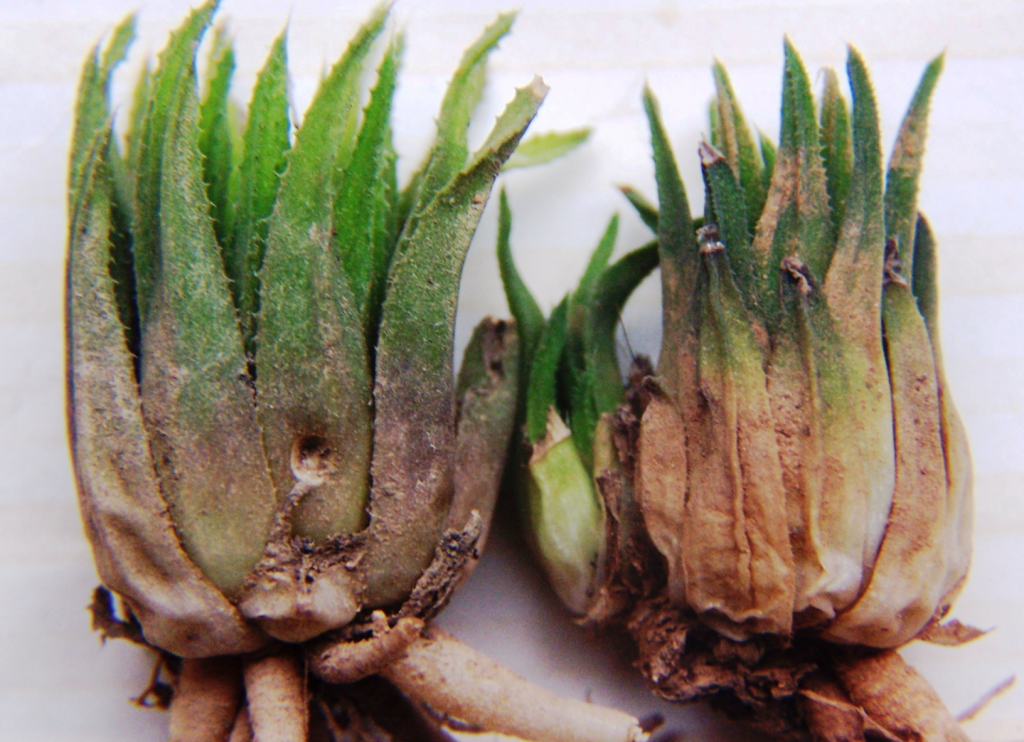
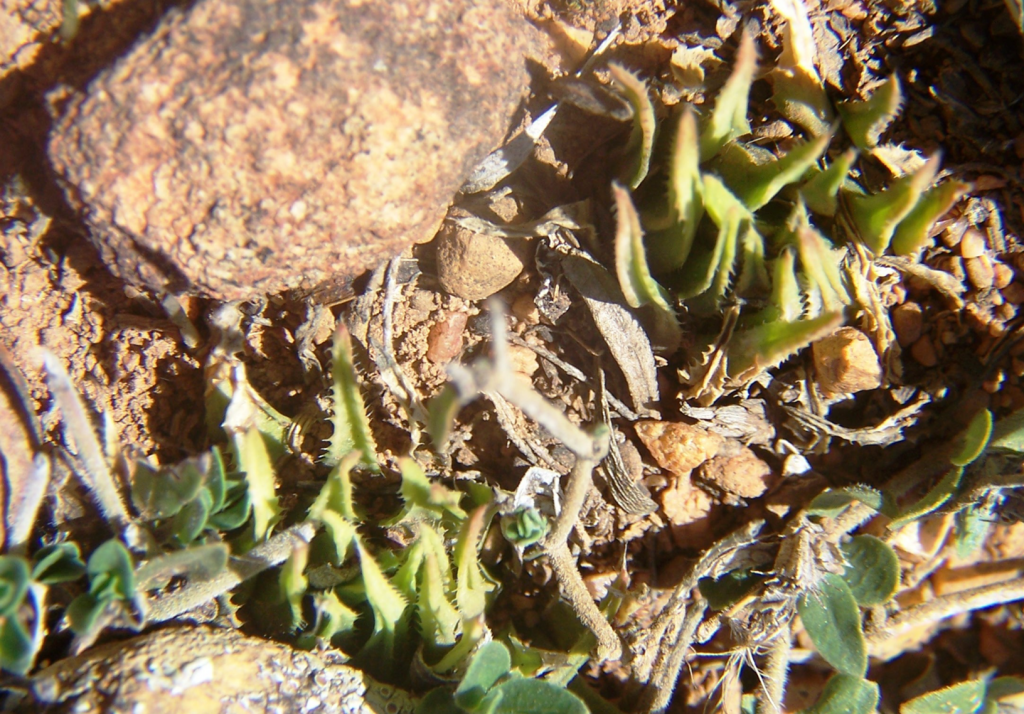

The plants there are smaller and much less clump-forming than JDV87/80=97/138 and are more reminiscent of H. parksiana. Unlike JDV97/136 (see figs. 3) that are solitary, small, dark-green plants growing in the lichen on a steep east-facing conglomerate slope, the plants are quite green in colour and often the tips of the leaves are slightly rounded and flattened as in H. floribunda. The habitat is west-facing on an old gravel river terrace and much drier and warmer than for JDV97/136, in sharp contrast to the very steep north-facing clay cliff where KDV87/80=97/138 occurs. In neither of these latter two sites are other plants significant, while at MBB7825 the plants are under renosterbush (Elytropappus) and related vegetation. I should mention that my wife on seeing the plants commented on the similarity to H. parksiana and this is not an observation that can simply be dismissed.
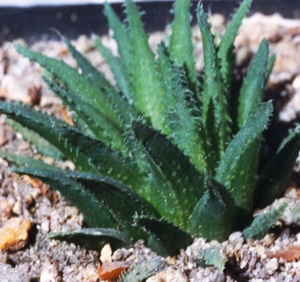
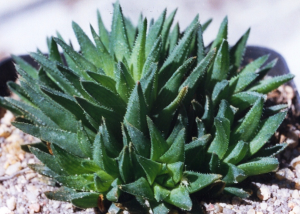

About 3km south of Herbertsdale (see fig. 4, MBB7827) we again found very similar plants, perhaps a little more spinose and slightly more clump forming. Neither of these two new populations fit comfortably in the existing formal varieties, as indeed is true for so many populations in most of the other species. I do not think it is rational to attempt formalizing names for them as there is quite substantial variation in each population. Others may do so if these plants ever get into general cultivation from vegetative propagation and onto lists.

From Herbertsdale we went to Klein Brak to investigate a set of four populations on the farm Rooiheuwel as indicated to me by Gerhard Marx. One of the species supposedly there was H. pygmaea and it was rather distressing to find that the Water Affairs Department has seen fit to run a bulldozer over the area with no indication that there was any need for doing so. However, we did find the other three species indicated by Gerhard. One is H. kingiana (see figs. 5.1-5.4 MBB7835).
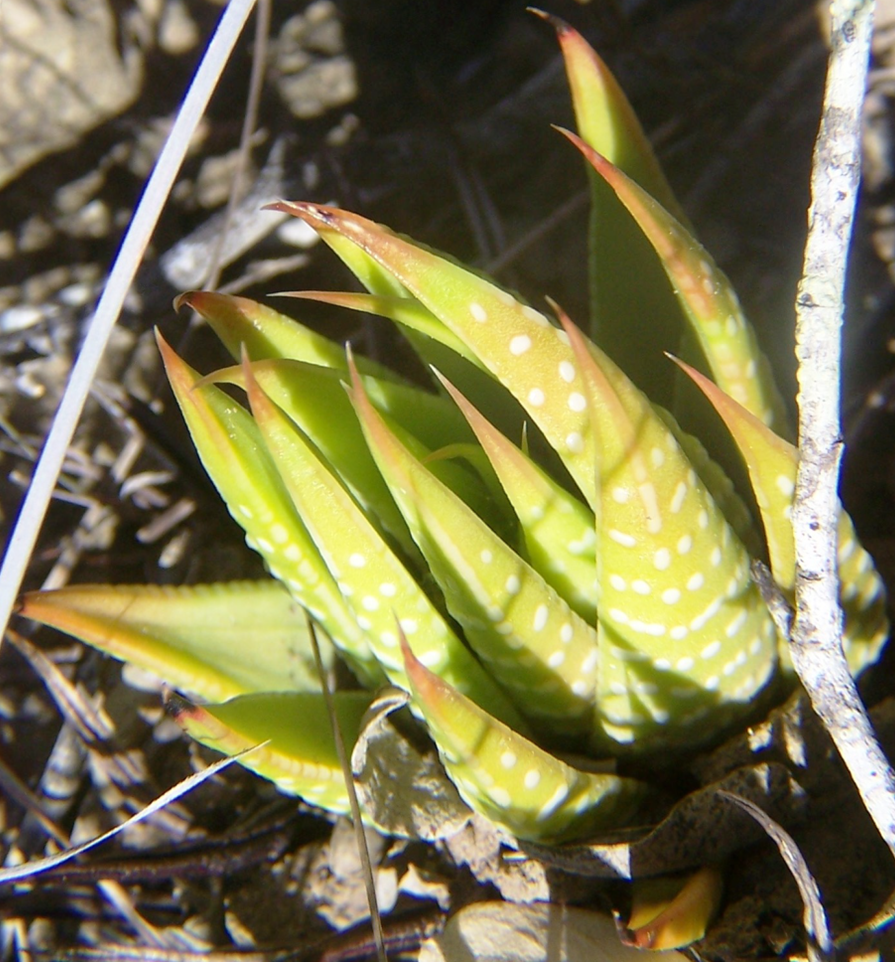
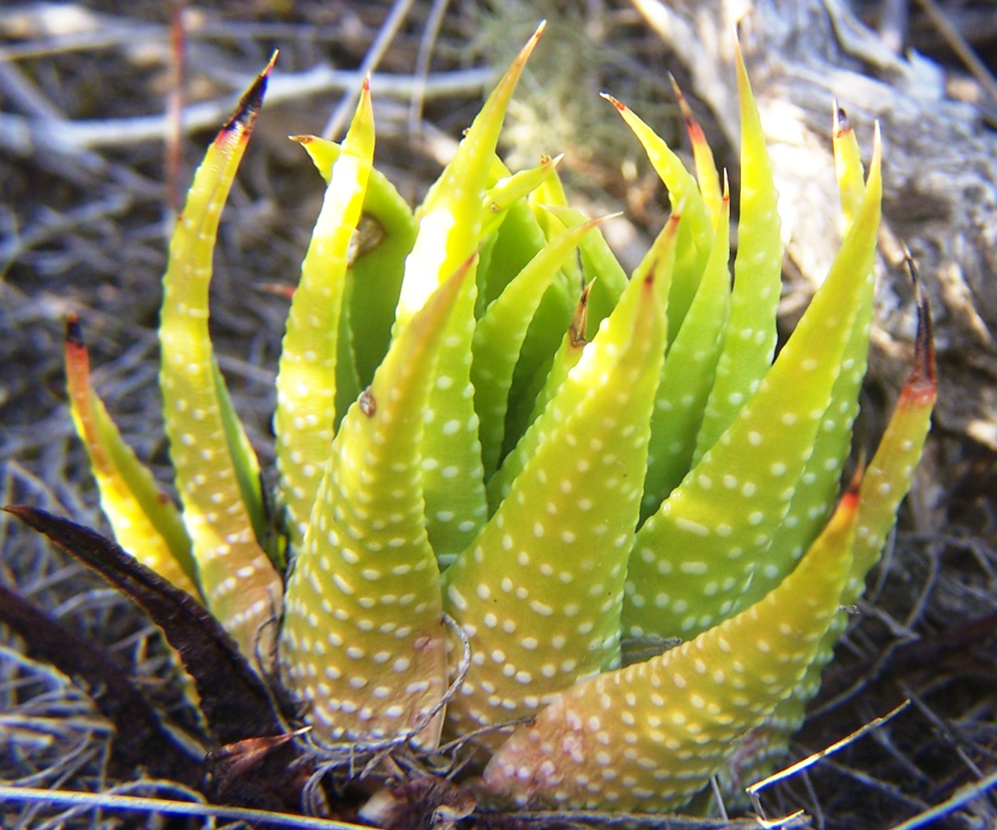

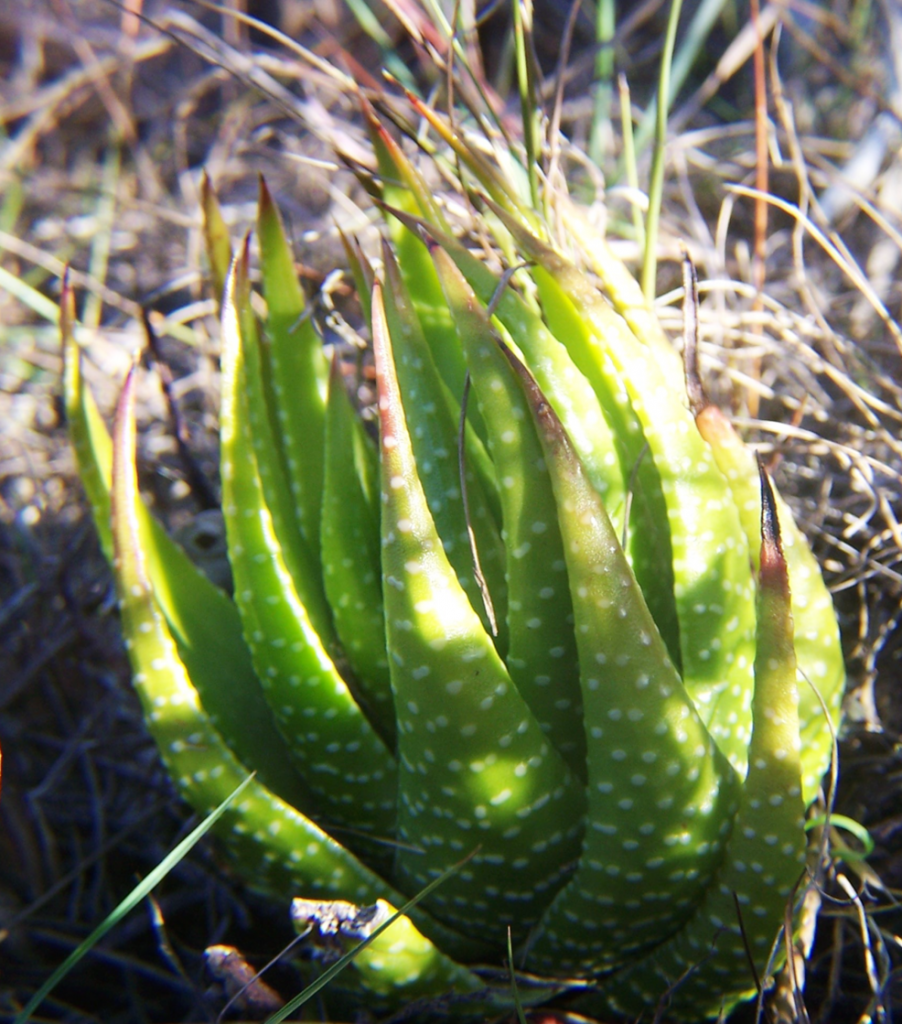
The others were H. parksiana (see figs 6 MBB7828)
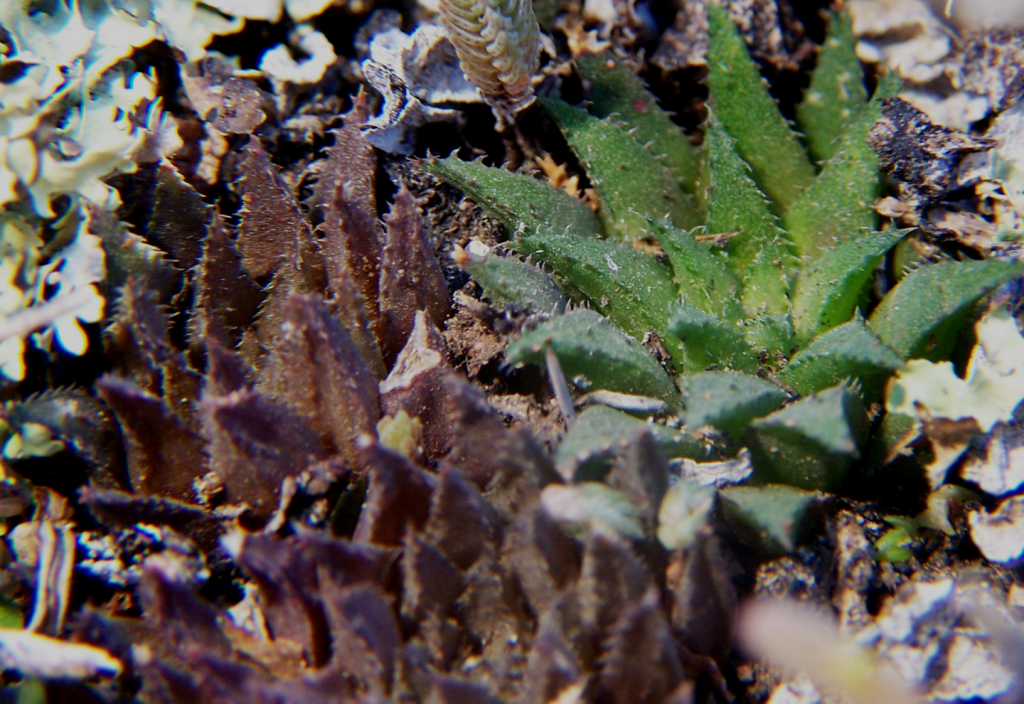
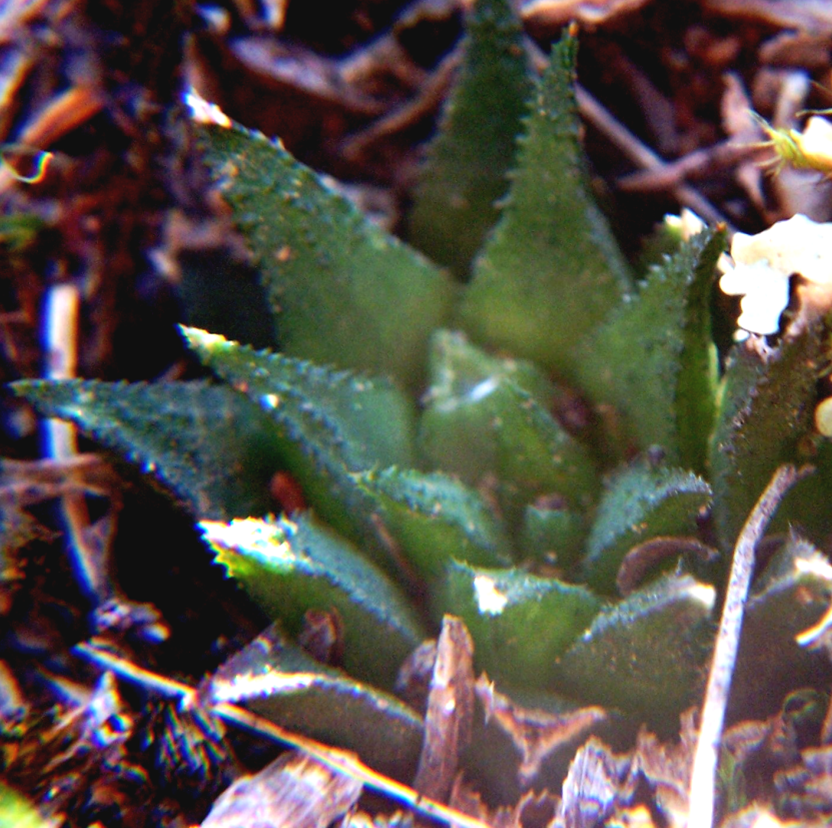
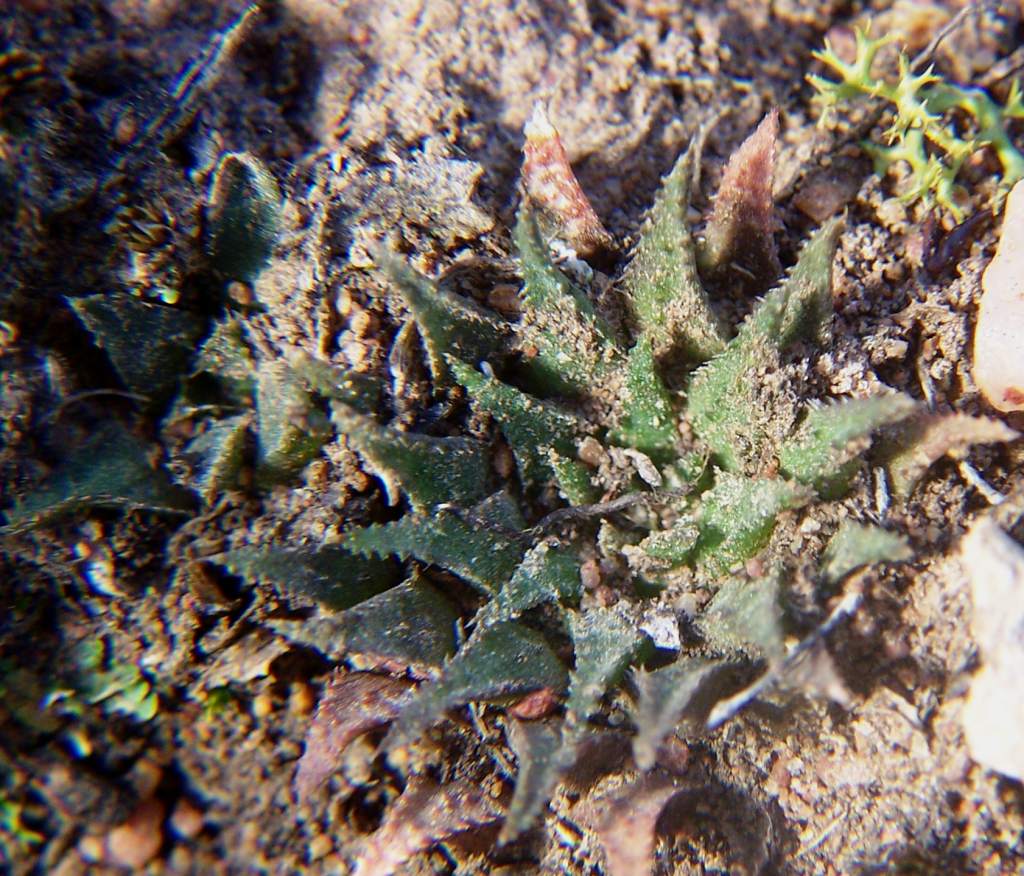
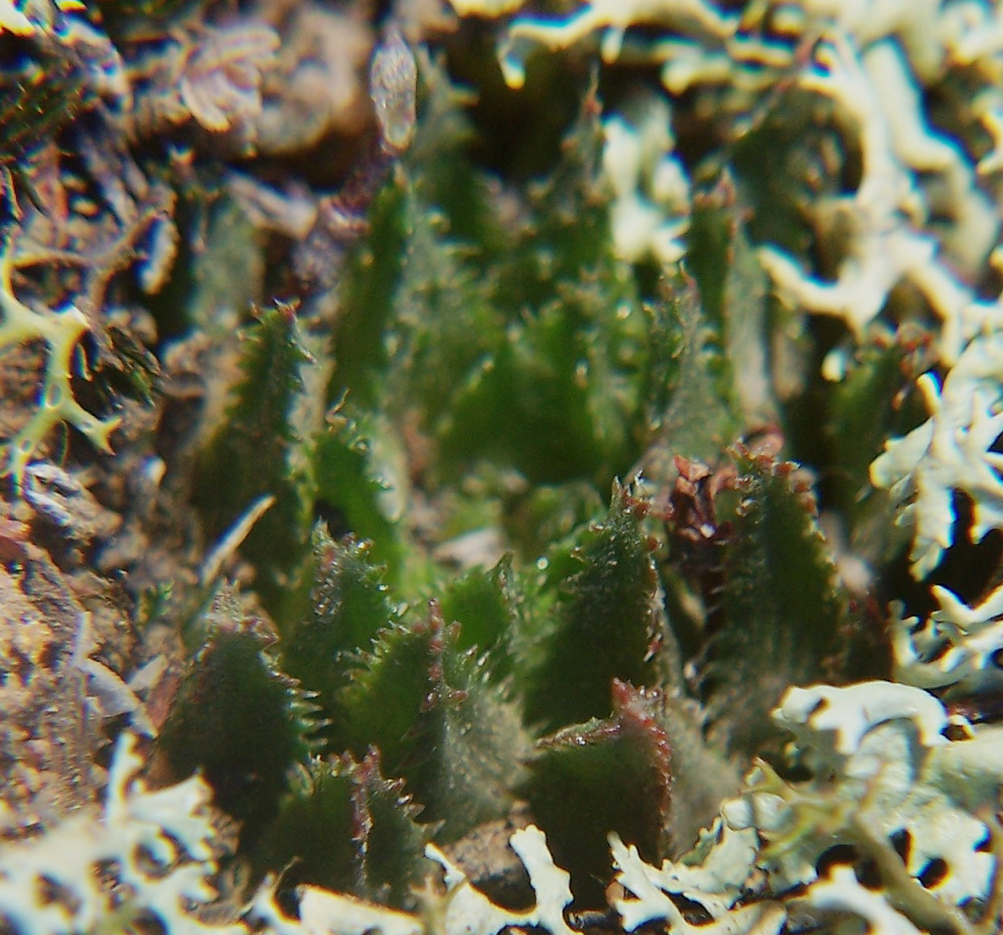
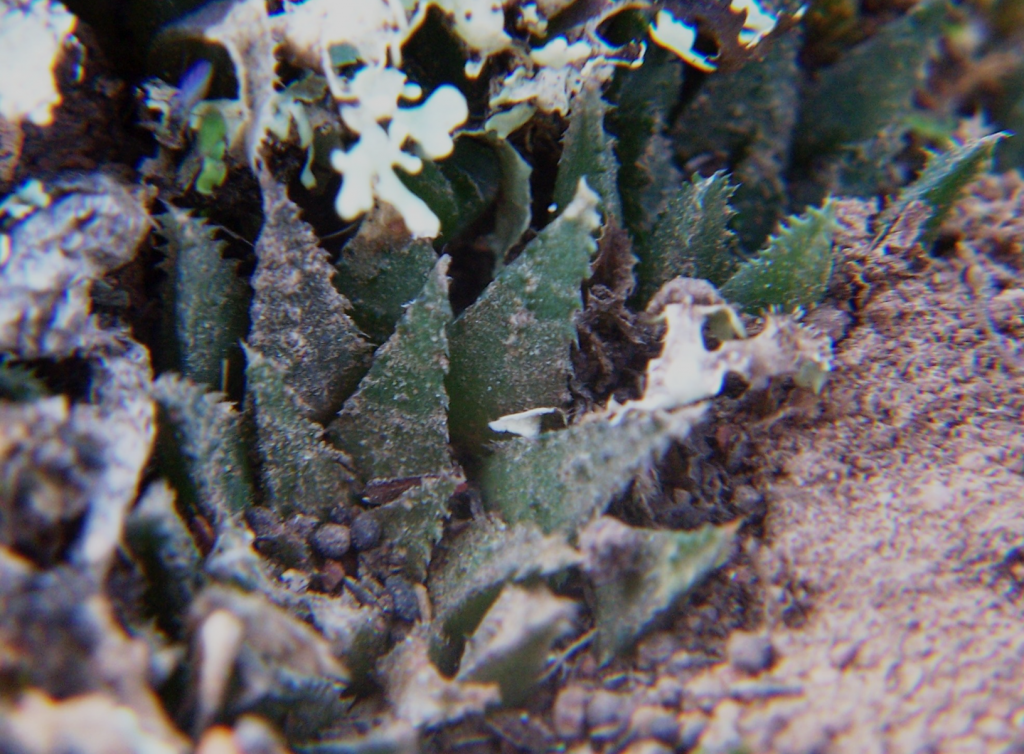
and H. chloracantha (see Figs 7 MBB7829), but this requires a little bending of the truth.

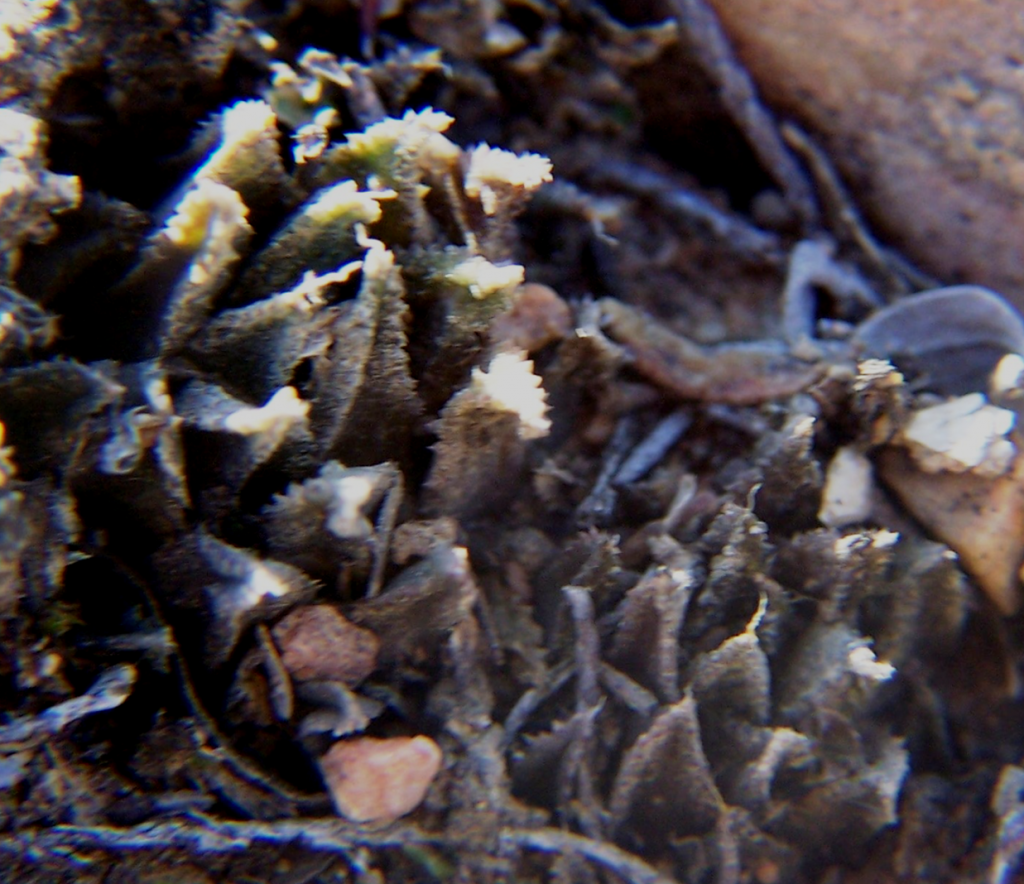
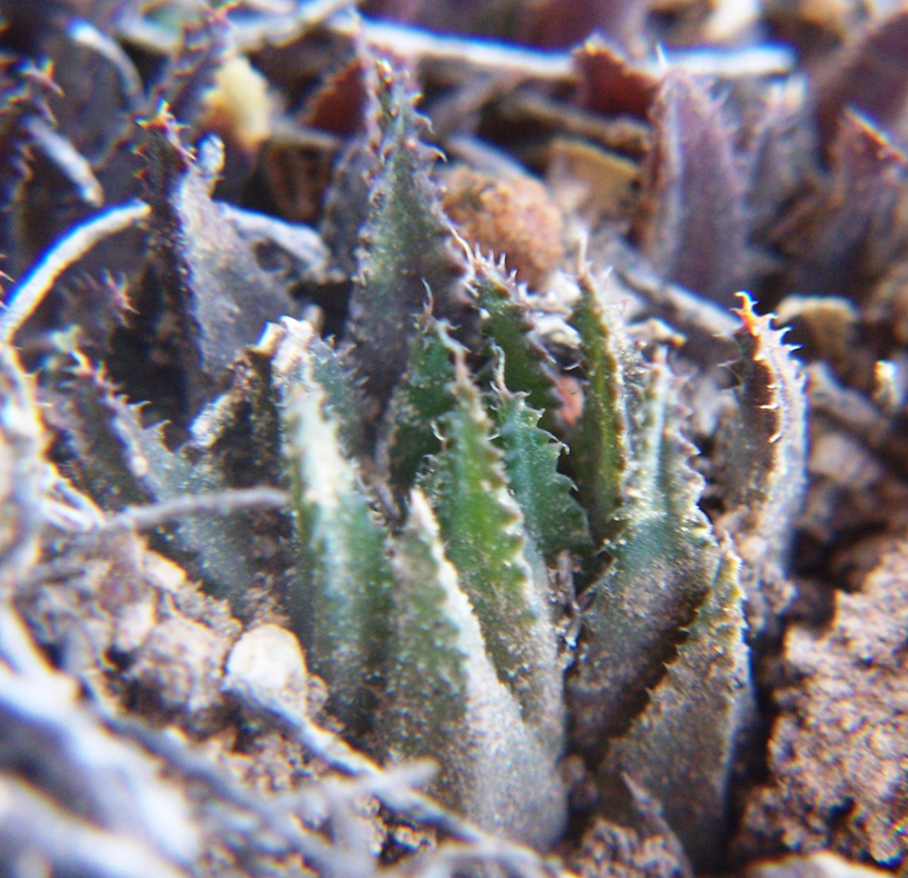
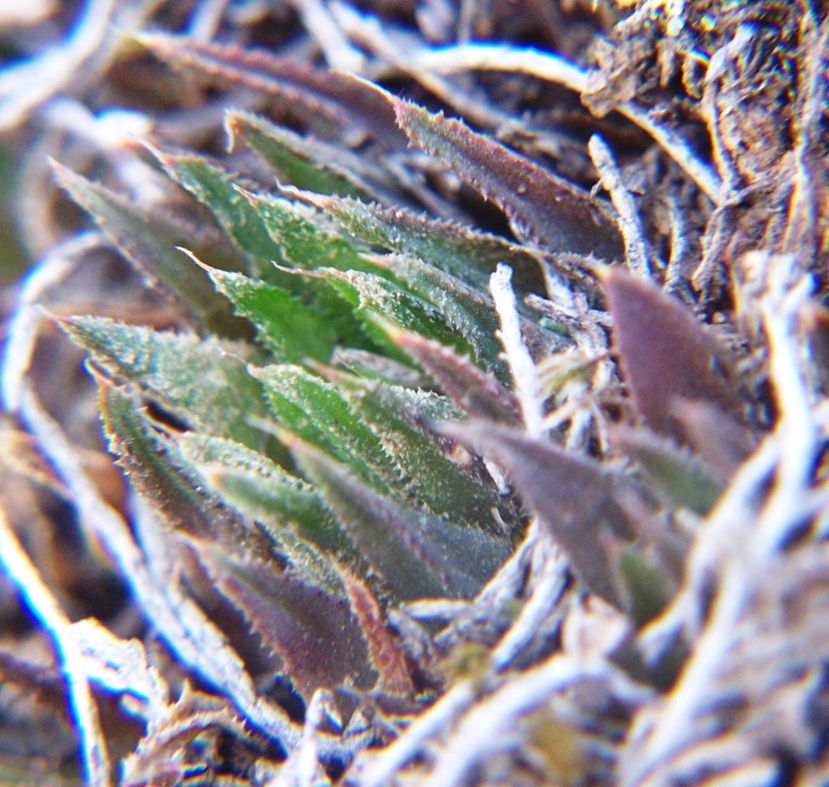

This H. parksiana site is about 400m southeast of an old locality of mine on an outcrop of rock virtually jutting into the road and now largely obliterated. At Gerhard’s site (viz MBB7828) the plants are small and while there is little doubt that they are generally alike to H. parksiana, there is definitely some degree of hybridization and some of the plants may actually be H. chloracantha. This is a rather difficult decision to make on the basis of stressed plants in habitat. This habitat is very restricted to a patch of fairly level aggregated conglomerate so that the plants are virtually in tiny shallow soil and lichen encrusted patches. A little distance further north there is another population to which we assign the name H. chloracantha. This is above a steep loose conglomerate cliff with a little more soil and immediate bush. The plants have rather abbreviated leaves and a darkish colour. There must be some doubt that they are discretely H. chloracantha. The habitat is not so restricted and one is compelled to ask why the plants then so are.
I try to avoid the unanswerable question of how these two species that flower together and seem to be able to hybridize quite freely, maintain their identity and come to occupy such specific, localized and widely separated sites? It would be nice to think that the technology is now seemingly available in DNA sequencing to begin probing these questions, and I will point, with reference to chameleons (see next chapter), to what I think is a disturbing reliance on that technology without the necessary knowledge and experience of what actually can be seen in the field. ♦

Great article since I have both H. parksiana and H. chloracantha. Nice to see the different pictures displayed also with side views. Too bad about the people who like to bulldoze the ground for unknown reasons.